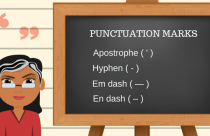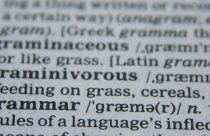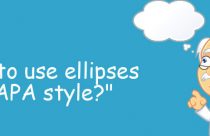Correct Usage of Quotation Marks in Academic Writing

The correct use of quotation marks can be confusing for authors, especially those whose primary language is not English (ESL authors). Quotation marks are used to show that the text is taken word for word from another source, to call attention to an important word or phrase, or when using a technical term for the first time. There are “run-in quotes,” and quotes that are separated by block text. There are quotes within other quotes and different punctuation styles depending on the subject matter, style guide used, and even the country. The following descriptions will help you with quotation marks in your academic writing.
Typeface
How do quotation marks look—what’s the typeface? In scientific writing, this is important because it can distinguish a quotation mark from a prime mark, which is used often in genetics and other physical-science disciplines. According to the Chicago Manual of Style (CMOS), quotation marks that are often called “curly” or “smart” quotes, are used in most published text and are meant to match its typeface. Smart quotes should not be confused with straight quotes (“), which is the computer’s default form. In addition, single straight quotes are often used as prime marks; as the symbol in measurements, such as feet and arcminutes; and in mathematics, as in x’y’; however, this is not the correct usage—the prime symbol (ʹ) should be used instead. Changes to the correct forms can easily be made in your computer’s word-processing program.
Quotation Marks in Text
Regardless of which style guide you use or which side of the Atlantic you are on, there is an agreement about the specific rules for using quotation marks in your text. For example, if you are inserting a direct quote into your writing, it is important to ensure that the reader understands that those words are not yours. In a story that includes conversations among the characters, quotation marks distinguish their words from those of the author.
Quotation marks are also used to call attention to new words or phrases, which is particularly useful in science and technical writing, such as in the following sentence: One of the several branches of zoology, “ichthyology,” concentrates on the study of fish. Note that, in keeping with the American English style, not only is the new term in double quotes, but the comma is inside the quotation marks.
Related: Confused about the use of punctuations in a research paper? Check out these posts now!
Quotation Marks in Reference Lists
Different style guides have different protocols for using quotation marks in reference lists. Papers written for the liberal arts or humanities follow the style set by the Modern Language Association (MLA). Authors with disciplines in the social and behavioral sciences usually use the American Psychological Association (APA) style guide, and writers in the biological sciences and engineering fields refer to the Council of Science Editors (CSE) handbook. For example, MLA and CMOS use quotation marks around titles of articles within books, but APA does not. Book titles are not surrounded by quotation marks, but periodicals (including newspapers) are. Note the differences in the following examples.
MLA: Bagchi, Alaknanda. “Conflicting Nationalisms: The Voice of the Subaltern in Mahasweta Devi’s Bashai Tudu.” Tulsa Studies in Women’s Literature, vol. 15, no. 1, 1996, pp. 41–50.
APA: MacLean, E. L., Krupenye, C., & Hare, B. (2014). Dogs (Canis familiaris) account for body orientation but not visual barriers when responding to pointing gestures. Journal of Comparative Psychology, 128, 285–297.
CMOS: Joshua I. Weinstein, “The Market in Plato’s Republic,” Classical Philology 104 (2009): 440.
CSE: Powell JM, Wattiaux MA, Broderick GA. Evaluation of milk urea nitrogen as a management tool to reduce ammonia emissions from dairy farms. J Dairy Sci. 2011;94(9):4690–4694
Single, Double, and Punctuation
There are different rules for using single or double quotations marks. In American English, double quotation marks are used first and single quotations marks are used second for a citation within a citation. British English is just the opposite. See the following examples.
American: “I know,” he said, “that I heard him say ‘help me’ as he fell.”
British: ‘I know’, he said, ‘that I heard him say “help me” as he fell.’
In American English, periods and commas are placed inside quotation marks while other punctuations are placed outside. Is this logical? No, but it stems from the days of typesetting by hand when the printer did not want to have small punctuation sort of hanging off the end of a block of text. In British English, all punctuation is placed outside the quotation marks unless it is part of the quoted text. For scientific writing, CSE suggests that punctuations should follow the British English style as “internationally accepted” usage; however, always check your author guidelines.
Block Text and Epigraphs
The format for quotations changes depending on the length of the passage. If it is more than four lines, MLA protocol states formatting the passage as block text, which is never surrounded by quotations marks, APA protocol states to use block text if the passage exceeds 40 words. Other style guides might have other rules so be sure to check.
Epigraphs are inscriptions that are often used on buildings, tombstones, or other objects. Although they can be direct quotes, quotation marks are not used; special typefaces and formats are used instead to call attention to them.
Writing Tips
Don’t overuse quotation marks—whatever style guide you use, it’s important that they be used correctly but sparingly. It is not always necessary to use them around words for emphasis. Always check to ensure that you are using the correct style for your discipline.
References
- Academic Skills, University of Melbourne. ‘Using quotation marks’. Retrieved from https://students.unimelb.edu.au/academic-skills/explore-our-resources/grammar/punctuation










A lot useful. Clear & concise. Thank you lots!